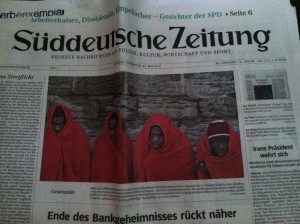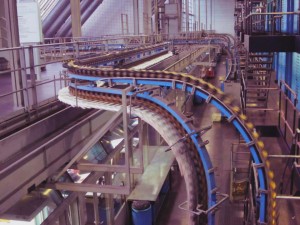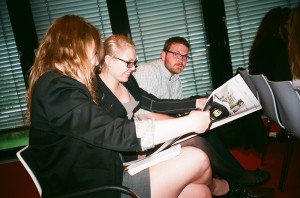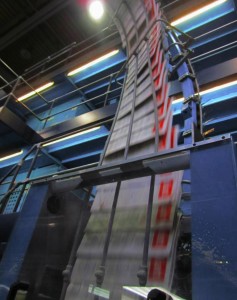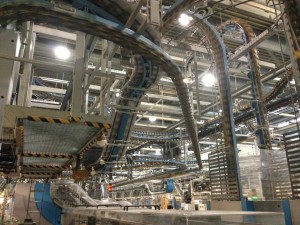by Carson Allwes
Point Park International Media class’ final media visit was to Süddeutsche Zeitung, one of the largest quality newspapers in Germany.
Süddeutsche Zeitung was the first free national paper in Germany. It reaches about one and half million people and is a Monday to Saturday paper. It depends partly on subscribers and single copies; about 84 percent of total sales come from this. One subscriber pays about 51.60 euro per month.
Having this revenue helps it not accept any government funds, which is true for some other German media. “There is no political pressure…no pressure from the government what to write,” said Michael Stengl, the product manager of advertisements.
Stengl started with a video of what a day is like at Süddeutsche Zeitung. Stengl translated the video and introduced the group to the newspaper company.
A day at Süddeutsche Zeitung starts at 4 in morning and the paper starts printing at 6 o’clock in the evening. There are usually three editions of the paper before the final copy.
“There are a few similarities between The New York Times and Süddeutsche Zeitung,” Stengl said.
There are regionals papers, free advertising papers, business information and specialized medicial and technology papers under the Süddeutsche Zeitung brand. The national edition of Süddetusche Zeitung, often abbreviated simply as “SZ,” contains four feature sections in economy, culture, sports, and politics. Issues printed for Munich and its closest municipalities will normally contain a local news insert.
Süddeutsche Zeitung has published an eight-page insert of The New York Times articles since 2004; this is known as The New York Times International Weekly and it is in English.
In 2000, advertising problems became a concern for the company. Süddeutsche Zeitung Library was created to response to provide revenue, which is a book group that has 50 works in the collection. Consumer can either buy the complete set or the individual book. The library venture was a huge success, Stengl said.
Süddeutsche Zeitung sold 80,000 complete sets and 12 million books total. Now, the company is expanding its medium to CDs and DVDs.
Süddeutsche Zeitung was located in Marienplatz for about six decades until the economy collapsed, Stengl said, and it resulted in a major staff reduction and need for a new direction to survive. A new building was constructed on the outskirts of Munich in 2007, and at the time was the most advanced and ecofriendly building in Germany.
Süddeutsche Zeitung is a unique newspaper because it has its own major production process plant, Stengl said, which is home to a state-of-the-art printing press. It is in charge of printing and packaging enough papers to supply SZ’s massive circulation as well as single copies. Along with Süddeutsche Zeitung’s own audience to satisfy, there are 13 other newspapers in Munich printed at SZ’s plant that exist outside of Süddeutsche Zeitung brand.
Stengl emphasized the quality of the paper and the need to be innovative to keep subscribers and to attract new readers.
“We focus on the quality of the paper,” Stengl said. “[And] on the quality of our products.”
He also said the editor in chief wants to be sure “not to bore” the professor or businessman but also to “educate the common people.”
Several other staff members and editors addressed the group, journalist Viola Schenz and Barbara Vorsamer, subchief editor. They reviewed the online process and the journalistic process the newspaper follows.
Vorsamer noted that the paper’s has “one of the most-read and unique news sites in Germany.” She said, “We were not the first, but we have one the most highly regarded sites in Germany.”
The staff posts all of what’s in the print edition, but some content is exclusively online. The newspaper uses real-time tracking for the site, and she noted that the peak time is noon to 1 p.m., or lunchtime.
Both Vorsamer and Schenz stressed that he most important issue for Süddeutsche Zeitung was the quality of its paper to reflect the brand of all its products for the masses. The paper has worked tirelessly to deliver the best news possible to their subscribers and have been rewarded immensely for their efforts, they said. Their innovation in printing, quality journalism, business and advertising have earned them significant recognition and accolades.
